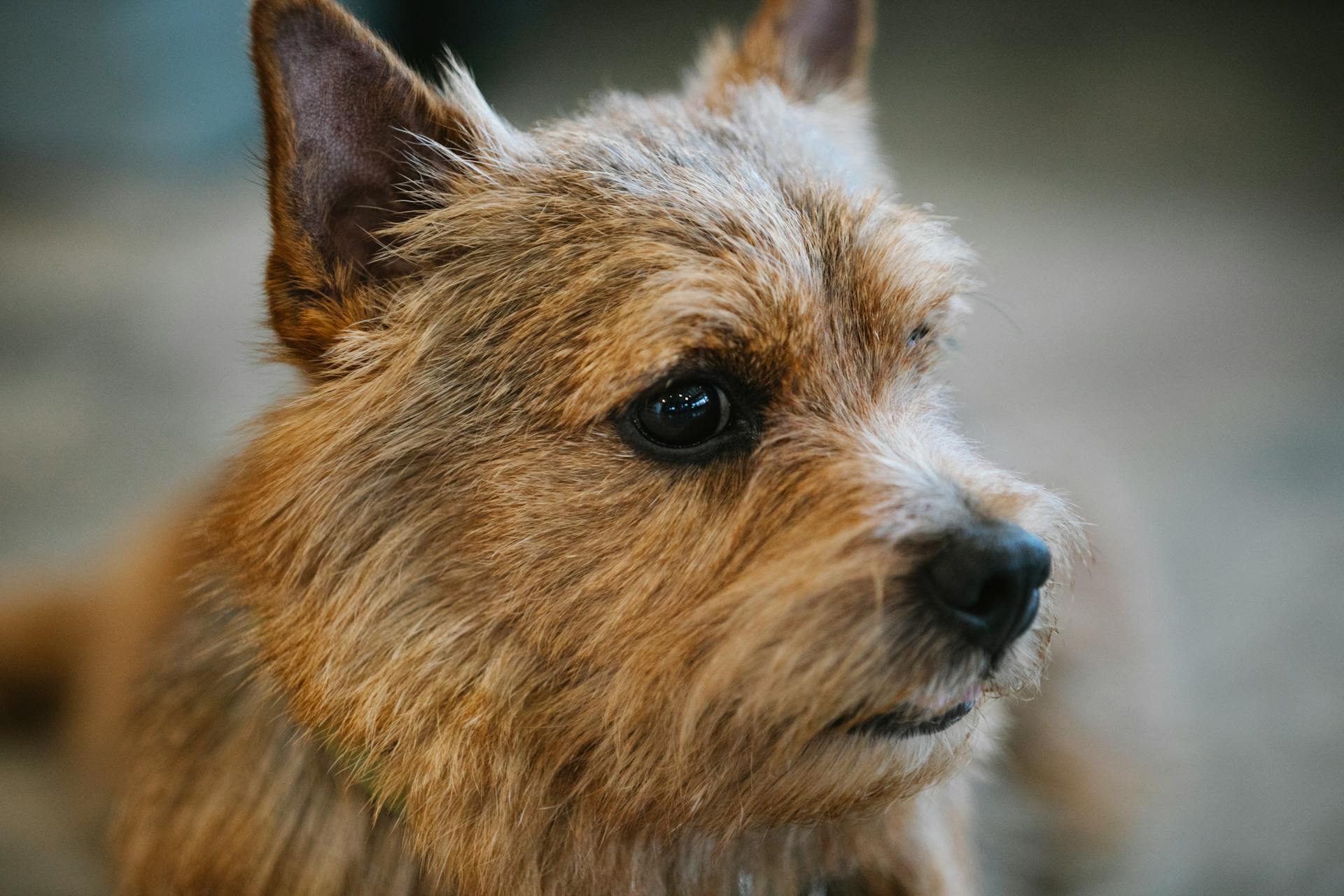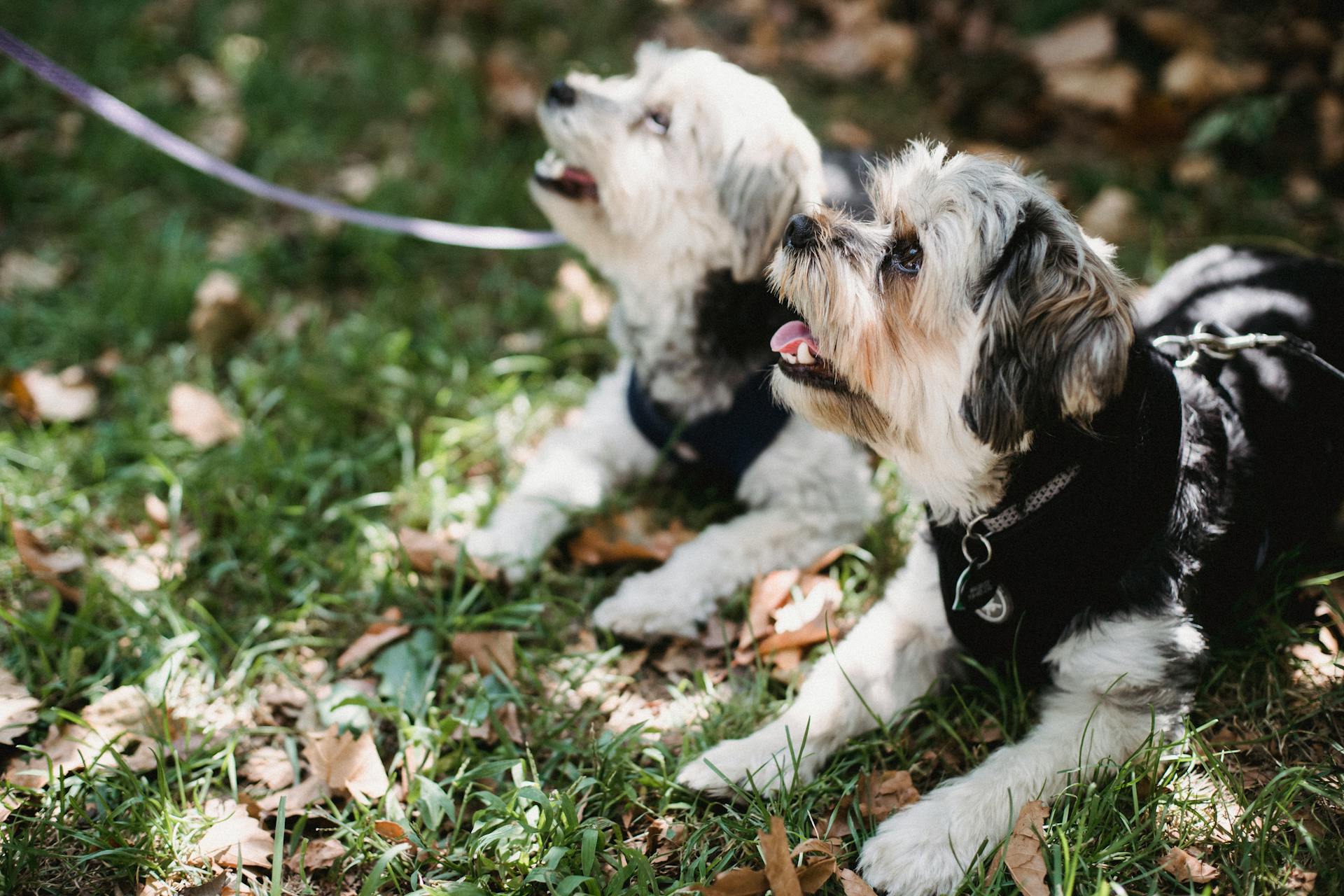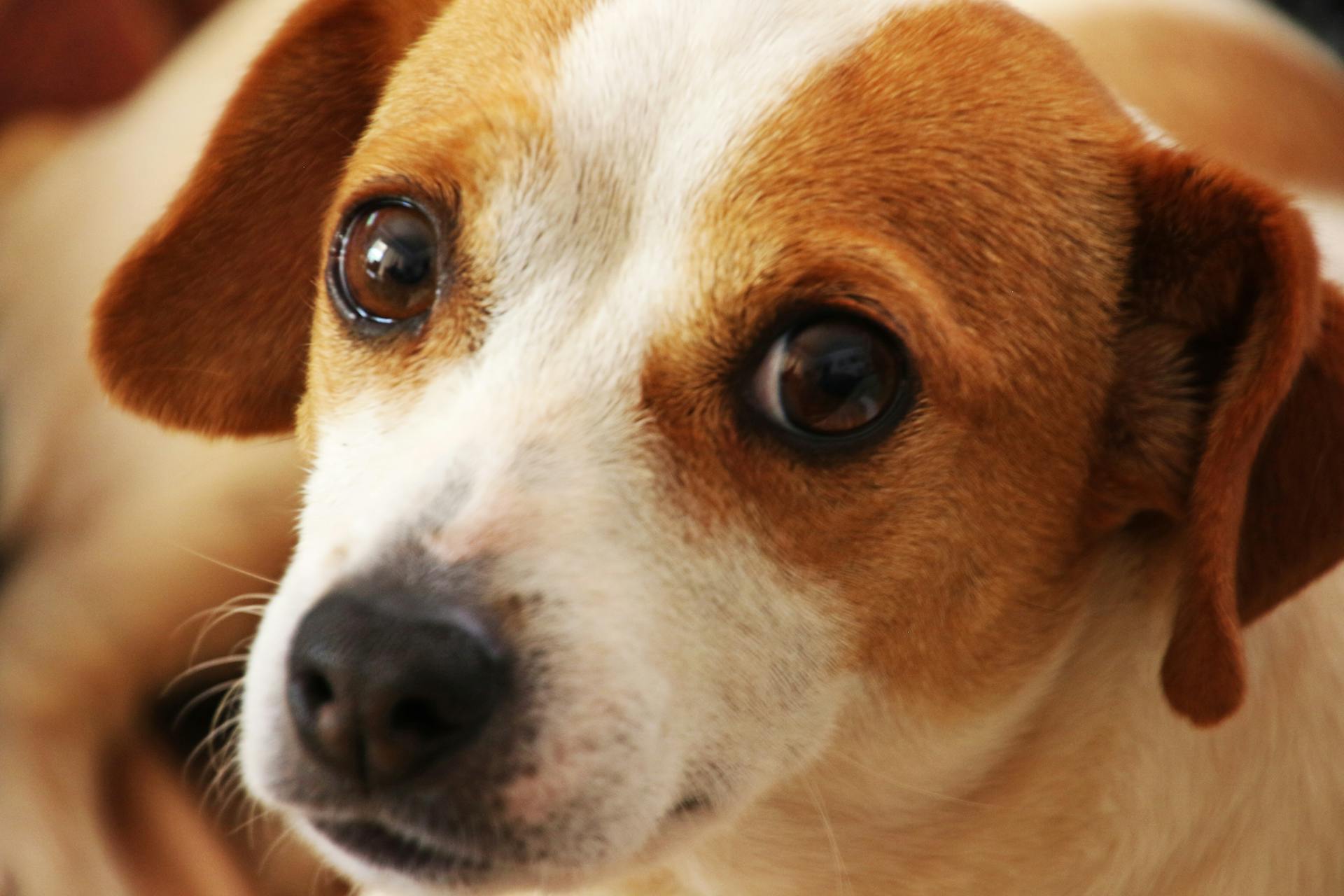
The Treeing Feist is a small to medium-sized dog breed that originated in the United States, specifically in the Appalachian region.
They are a feisty and energetic breed, weighing between 20-40 pounds and standing between 13-18 inches tall.
Treeing Feists are known for their hunting ability, particularly for small game like rabbits and raccoons.
Their short coats require minimal grooming, making them a great choice for busy owners.
Treeing Feists are highly intelligent and trainable, but they can be stubborn at times, requiring patient and consistent training.
They thrive on physical and mental stimulation, making them a great companion for active families.
Physical Characteristics
The Treeing Feist is an agile, active, small tree dog. Its body is slightly longer than tall, with legs long enough to allow for quick movement in rough terrain.
The head is blocky, with a broad skull, moderate stop, and strong muzzle. The tail is straight and can be natural or docked. The coat is short and smooth.
The Treeing Feist should be evaluated as a working dog, and exaggerations or faults should be penalized in proportion to how much they interfere with the dog's ability to work. Scars should neither be penalized nor regarded as proof of a dog's working abilities.
General Appearance
The Treeing Feist is an agile, active, small tree dog. They are slightly longer than tall, which allows them to move quickly and with agility in rough terrain.
Their legs must be long enough to support their active lifestyle. A dog with short legs would struggle to keep up with the demands of treeing.
The head is blocky, with a broad skull, a moderate stop, and a strong muzzle. This distinctive head shape is a key characteristic of the Treeing Feist breed.
The tail is straight and set on as a natural extension of the topline, and may be either natural or docked. This tail carriage helps the dog balance while running and jumping.
The coat is short and smooth, which is ideal for a working dog that needs to move quickly and easily through the terrain. A short coat also helps to reduce the risk of matting and tangling.
Scars should neither be penalized nor regarded as proof of a dog's working abilities. This means that a Treeing Feist with scars is not automatically disqualified from being a good working dog.
A fresh viewpoint: How Long Does a Deer Head Chihuahua Live
Coat Color and Grooming

Feist dogs have short coats that don't shed a lot, making grooming a breeze. They only need to be brushed two or three times a week.
Their short coats come in a wide variety of colors and combinations, including black, white, gray, and many others.
Feist dogs have sensitive skin and should only be bathed as needed, or every few months. They can be prone to allergies, so you may need to find a special shampoo.
They shed an average amount, year-round, and occasional brushing to remove loose hair will be helpful.
Intriguing read: American Bully Coats
Gait
The Treeing Feist's gait is truly a sight to behold, with a smooth and effortless stride that's a testament to their athletic ability. They have good reach in their forequarters, which allows them to cover a lot of ground with ease.
Their rear quarters are incredibly powerful, with strong driving power that propels them forward with speed and agility. This is thanks to their hocks fully extending, which gives them a significant boost in power.
As they move, their legs remain straight and true, neither turning in nor out, and their feet don't cross or interfere with each other. This is a result of their well-coordinated movement, which allows them to maintain their balance and control.
As they pick up speed, their feet tend to converge towards the centerline of balance, which helps them maintain their stability and agility. This is a remarkable sight to see, and it's a testament to the Treeing Feist's incredible athletic ability.
Temperament and Personality
The Treeing Feist dog breed is known for being curious and intelligent, which can make for a fun combination, but it also means they need a lot of mental stimulation to keep them from becoming bored.
They require lots of physical stimulation too, so be prepared for plenty of walks and playtime to work that energy off. These dogs are remarkably agile, so consider setting up an agility course in the backyard.
Treeing Feists are friendly, lively, and fearless, and they form strong bonds with their families. They love playing with their family members, but they can get anxious and bored if left alone for hours at a time.
They can be a bit barky, especially when someone comes to the front door, so be prepared for some watchdog-like behavior.
Temperament & Intelligence
The Feist breed is known for being curious and intelligent, making them a fun combination to have around.
They require a lot of mental stimulation to keep them from becoming bored, so be prepared to engage them in learning new things and giving them a job to do.
Feists are also quite energetic and active, needing lots of physical stimulation, which means plenty of walks and playtime to work off that energy.
Their agility makes them a great candidate for an agility course in the backyard, if you're up for the challenge.

Feists form strong bonds with their family and love playing with them, but they shouldn't be left alone for hours at a time, as this can lead to anxiety and boredom.
Mountain Feists are incredibly friendly and loving, making them a great addition to many families.
They are true hunting dogs and may chase and even kill small animals, so it's essential to consider this when deciding to bring one home.
Feists are also good watchdogs, loving their families but wary of strangers, which can be a great asset for families who value their home's security.
Early training and socialization are crucial for bringing out the best in your Feist, as they can be a bit stubborn at times.
The Breed is Not
The Feist is not a hypoallergenic breed, despite its low-shedding coat. Many people think it's hypoallergenic, but it's not, and you may still have issues if you're an allergy sufferer.
Family and Pet Compatibility
Family and Pet Compatibility is a crucial aspect to consider when deciding if a Treeing Feist is the right breed for you. Feists are wonderful family pets, but they work better for families with older children who have been taught how to interact with animals appropriately.
Proper socialization from a young age is key to developing a good relationship between your Feist and children. This means exposing your puppy to children from an early age to help them get along better.
Feists can be possessive over items like toys, so it's essential to teach your children to respect their belongings. Supervising play between children and animals is also crucial to prevent any biting or ear or tail pulling.
If you're considering adding another dog to your household, Feists can get along with other canines if they're raised together. However, introducing new dogs can be a challenge, and Feists may fight with new dogs.
Readers also liked: American Bully Family Dog
Here are some general guidelines for Feist compatibility with other pets:
- Feists can get along with other dogs of equal or larger size.
- They are not recommended for households with small animals, like hamsters or gerbils, due to their strong prey drive.
- Feists may not be the best fit for households with cats, especially if they're not well-socialized.
Dog Puppies
If you're looking to bring a new furry friend into your family, adopting a dog puppy is a great option. Feist dog puppies are a great choice, but be aware that they can be prone to ill health and behavioral problems if you don't research the breeder carefully.
Reputable breeders are essential when adopting a Feist dog puppy. You'll need to locate a reputable breeder or rescue organization, as Feist dog puppies can be susceptible to disreputable backyard breeders.
Feist rescues are rare, so you may need to travel to get one if you don't live in the American South or California.
You might enjoy: Staffordshire Bull Terrier Puppies Breeders
Pet Compatibility
Pet compatibility is a crucial aspect of family life, especially when you have furry friends joining the crew. Feists, in particular, can make wonderful family pets, but they require some special attention.
Feists are generally loving and friendly to their families, but their strong prey drive makes them a challenge with other pets. They're not recommended for households with small animals like guinea pigs, rabbits, hamsters, mice, gerbils, etc.
If this caught your attention, see: Pit Bulls as Pets
To ensure harmony in your home, it's essential to supervise play between children and animals. Teach your child to approach dogs calmly and gently, and never to disturb them while they're sleeping or eating.
If you're considering adding a Feist to your family, it's crucial to socialize them from a young age. This will help them get along better with children and other pets. In fact, Feists that have been around children from puppyhood will get along much better than those that haven't.
Here are some guidelines to keep in mind when introducing a Feist to your family:
Remember, with patience, love, and proper training, you can create a harmonious home for both your family and your Feist.
Frequently Asked Questions
Is there a difference between the Mountain Feist and Treeing Feist?
Yes, the Mountain Feist and Treeing Feist are distinct breeds, with the Mountain Feist recognized as a separate breed by the United Kennel Club. Despite similarities, they have unique characteristics worth exploring.
What are treeing feists mixed with?
Treeing feists can be a cross between various breeds, including Beagles, Jack Russells, Mountain Feists, and Rat Terriers, as well as other treeing feists bred over generations. Their ancestry is often a mix of multiple breeds, making each treeing feist unique.
What is the difference between a mountain cur and a feist?
Mountain curs are generally larger and heavier than feists, weighing between 30-50 pounds, while feists are smaller and lighter, weighing under 30 pounds. This size difference affects their working style, with feists excelling at close work and curs better suited for wider-ranging tasks.
Featured Images: pexels.com


